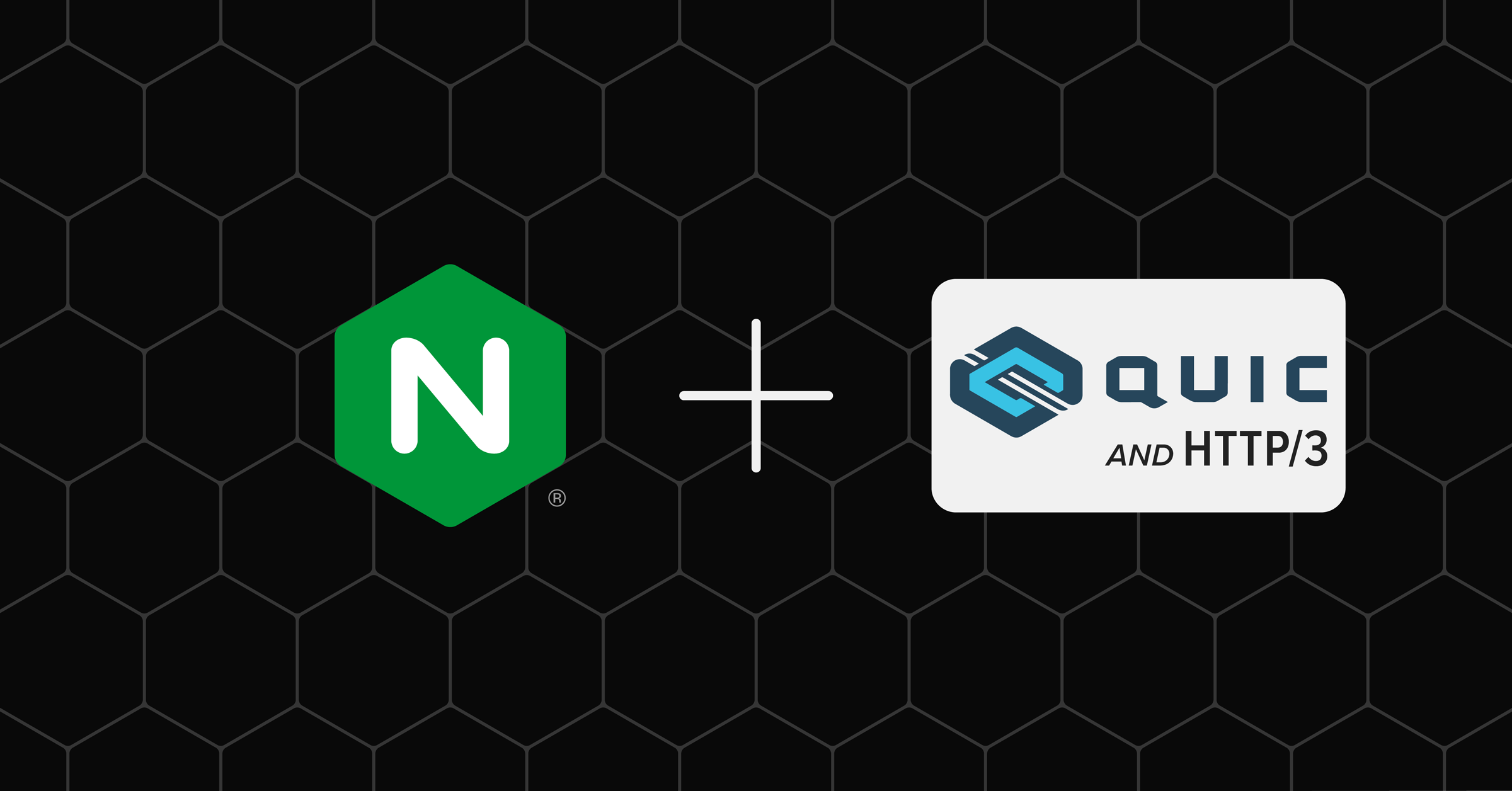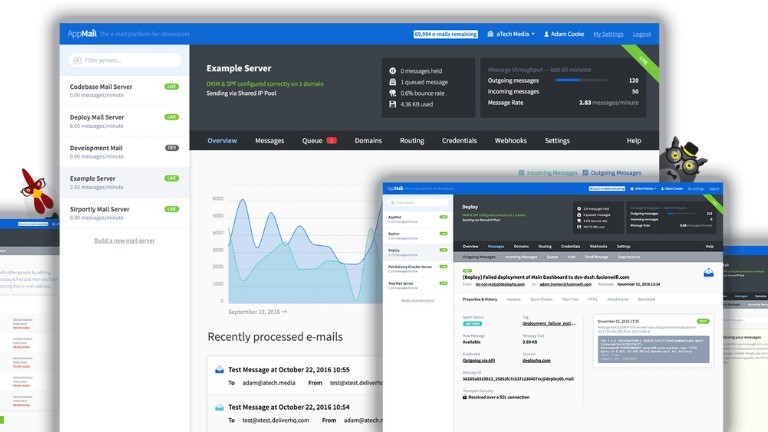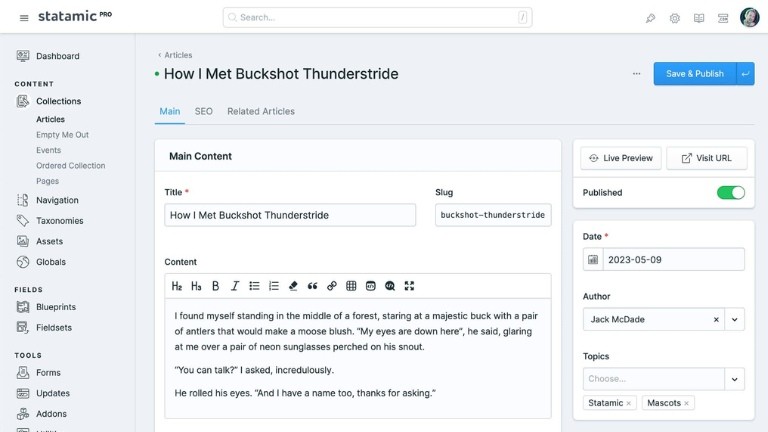HTTP/3 nginx responsible for transferring data between clients and servers on the web using the Hypertext Transfer Protocol, which is the latest version. As compared to its predecessors, this new version offers improved performance, reduced latency, and increased security.
In today's digital landscape, website speed and security are paramount for delivering an exceptional user experience. Slow-loading websites frustrate users and can negatively impact your search engine rankings. Additionally, with the rise in cyber threats, ensuring robust security measures is crucial to safeguarding sensitive data.
Fortunately, there is a solution that addresses both these concerns - HTTP/3 (also known as QUIC) in conjunction with Nginx. By enabling HTTP/3 on your server, you can enhance website performance while fortifying its defenses against potential attacks.
This blog post will guide you through the process of configuring it to leverage HTTP/3 capabilities effectively. To begin, we'll explore how to install necessary patches, compile and install Nginx with HTTP/3 support, configure it correctly, and verify that it is functioning optimally.
Join us on this journey as we unlock the immense benefits of incorporating HTTP/3 into your web infrastructure for maximum speed and security!
Binary Packages Now Available for the Preview NGINX QUIC+HTTP/3
The NGINX team has released binary packages for the preview implementation of QUIC+HTTP/3.
Installing HTTP/3 (QUIC) on nginx
Boosting Website Performance and Security
Prerequisites
To successfully enable HTTP/3 on Nginx, there are a few prerequisites to consider.
Domain names
Servers running Ubuntu 20.04 or later
Server root access
Installed Nginx version 1.19.0 or later
Install OpenSSL version 1.1.1 or later
Knowledge of Linux command line and Nginx configuration
The first step is to install the QUIC patches for Nginx
The first step is to apply the QUIC and HTTP/3 patches to Nginx source code. To enable Nginx to support the new protocol, these patches are essential. Moreover, the latest patches can be downloaded from the official QUICHE GitHub repository.
To install the required dependencies, SSH into your server and run the following commands:
sudo apt update
sudo apt install -y build-essential libpcre3-dev zlib1g-dev libssl-dev
Now, download the Nginx source code and the QUICHE library:
wget https://nginx.org/download/nginx-1.19.0.tar.gz
tar xvf nginx-1.19.0.tar.gz
git clone --recursive https://github.com/cloudflare/quiche
After downloading the patch files, apply them to the Nginx source code:
cd nginx-1.19.0
patch -p01 < ../quiche/extras/nginx/nginx-1.19.patch
Step 2: Compile and Install Nginx with HTTP/3 Support
With the patches applied, we can compile and install Nginx. Execute the following commands:
./configure \
--prefix=/etc/nginx \
--sbin-path=/usr/sbin/nginx \
--modules-path=/usr/lib/nginx/modules \
--conf-path=/etc/nginx/nginx.conf \
--error-log-path=/var/log/nginx/error.log \
--http-log-path=/var/log/nginx/access.log \
--pid-path=/var/run/nginx.pid \
--lock-path=/var/run/nginx.lock \
--http-client-body-temp-path=/var/cache/nginx/client_temp \
--http-proxy-temp-path=/var/cache/nginx/proxy_temp \
--http-fastcgi-temp-path=/var/cache/nginx/fastcgi_temp \
--http-uwsgi-temp-path=/var/cache/nginx/uwsgi_temp \
--http-scgi-temp-path=/var/cache/nginx/scgi_temp \
--user=nginx \
--group=nginx \
--with-compat \
--with-file-aio \
--with-threads \
--with-http_addition_module \
--with-http_auth_request_module \
--with-http_dav_module \
--with-http_flv_module \
--with-http_gunzip_module \
--with-http_gzip_static_module \
--with-http_mp4_module \
--with-http_random_index_module \
--with-http_realip_module \
--with-http_secure_link_module \
--with-http_slice_module \
--with-http_ssl_module \
--with-http_stub_status_module \
--with-http_sub_module \
--with-http_v2_module \
--with-http_v3_module \
--with-mail \
--with-mail_ssl_module \
--with-stream \
--with-stream_realip_module \
--with-stream_ssl_module \
--with-stream_ssl_preread_module \
--with-cc-opt="-I../quiche/include" \
--with-ld-opt="-L../quiche/target/release"
make
sudo make install
The following commands configure Nginx with various options, including HTTP/3 support, and install the compiled binary in the appropriate location. Make sure the paths and version numbers are correct.
Step 3: Configure
In your favorite text editor, open the configuration file, usually located at /etc/nginx/nginx.conf, and configure it to use:
sudo nano /etc/nginx/nginx.conf
First, make sure the http2 and http3 modules are enabled in the listen directive:
server {
listen 80;
listen [::]:80;
listen 443 ssl http2;
listen [::]:443 ssl http2;
listen 443 ssl http3 reuseport;
listen [::]:443 ssl http3 reuseport;
}
Next, add the following SSL configuration options to the server block:
server {
ssl_certificate /etc/ssl/certs/your_cert.crt;
ssl_certificate_key /etc/ssl/private/your_cert.key;
ssl_protocols TLSv1.2 TLSv1.3;
ssl_ciphers "TLS_AES_128_GCM_SHA256:TLS_AES_256_GCM_SHA384:TLS_CHACHA20_POLY1305_SHA256:ECDHE-RSA-AES128-GCM-SHA256:ECDHE-RSA-AES256-GCM-SHA384";
ssl_prefer_server_ciphers on;
ssl_quic on;
ssl_early_data on;
}
Now restart nginx
sudo systemctl restart nginx
Nginx now supports HTTP/3 alongside HTTP/2 and HTTP/1.1.
Verify HTTP/3 support in step 4
Use an online testing tool to verify that your server supports HTTP/3. Firstly, enter your domain name, and then click "Check." If everything is configured correctly, your server should display a green checkmark.
To test your server, you can use curl with the --http3 flag:
curl -I --http3 https://example.com
Learn more at:
For more information, visit nginx website to delve deeper into the topic.
Configuring NGINX for QUIC+HTTP/3
A Step-by-Step Guide to Optimize Website Speed and Security.
Testing
Ensuring Optimal Performance and Security Measures.
What’s Next
With the continuous development of technology, it is expected that HTTP/3 and Nginx will undergo further enhancements.
Furthermore, we highlighted that binary packages are available for preview NGINX QUIC implementation if you prefer not to go through the compilation process yourself. We also mentioned resources where readers could learn more about NGINX's QUIC+HTTP/3 capabilities.
Enhancing website speed and security is imperative in today's digital landscape. By incorporating technologies like HTTP/3 with Nginx configuration changes as outlined above, businesses can provide users with faster response times while maintaining robust security measures. Consider implementing these advancements today to deliver extraordinary digital experiences effortlessly.







